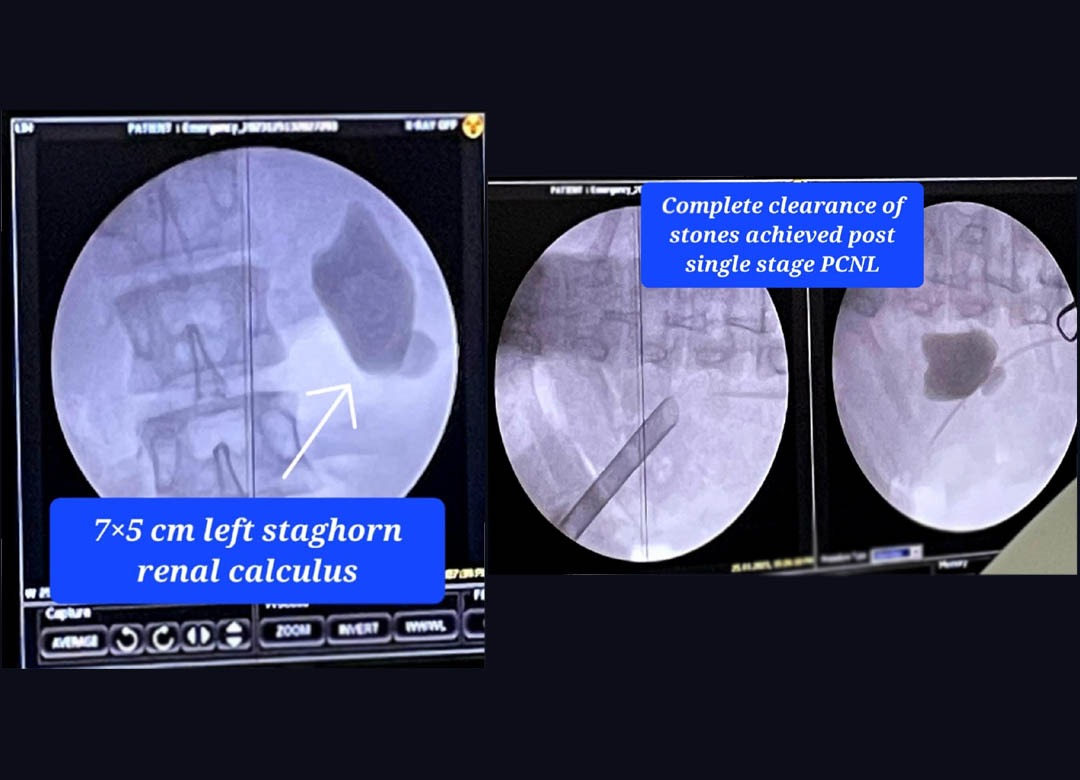Urolithiasis is a common disease and is considered a relevant public health problem worldwide.Although kidney stones initially often remain asymptomatic, treatment is commonly performed to prevent future complications associated with the disease (e.g., renal colic, urinary tract infections, and impairment of kidney function).The surgical treatment of kidney stones is complex because multiple competitive treatment modalities are available and more than one modality may be appropriate in some cases. The selection of proper treatment, which is directed by patient- and stone-specific factors, remains the most significant predictor of successful outcomes. PCNL is the gold standard procedure for large kidney stones owing to its high stone free rate, and the procedure can be safely performed by well-trained urologists.
A 50 year old male presented with large left renal staghorn calculus (7*5cm ). Single puncture with dilation upto 28fr was done through upper calyx. All stone fragments were completely removed in single sitting. No nephrostomy tube was put and only DJ stent was indwelled. Patient was discharged comfortably on postoperative day 1.

Percutaneous access to the renal collecting system results in a high stone free rate; therefore, it is considered the treatment of choice for renal stones measuring >20 mm in diameter. In general, PCNL is considered a demanding procedure, but it is safe and effective when performed by experienced urologists.The nephrostomy tube may be a cause of postoperative pain. To reduce this tube-related complication, modifications, including the use of tubeless PCNL, have been presented. One of the advantages of tubeless PCNL is reduced postoperative discomfort and pain associated with the tube and decreased requirement of analgesics. Tubeless PCNL is effective in patients with large renal stone. Tubeless PCNL is a unique and good technique that can be safely used.


